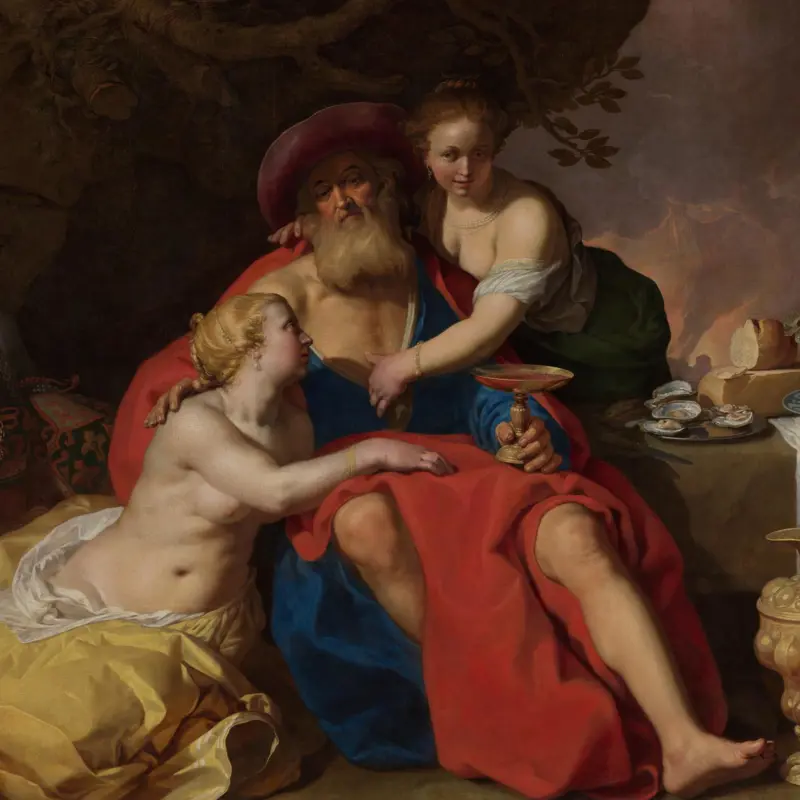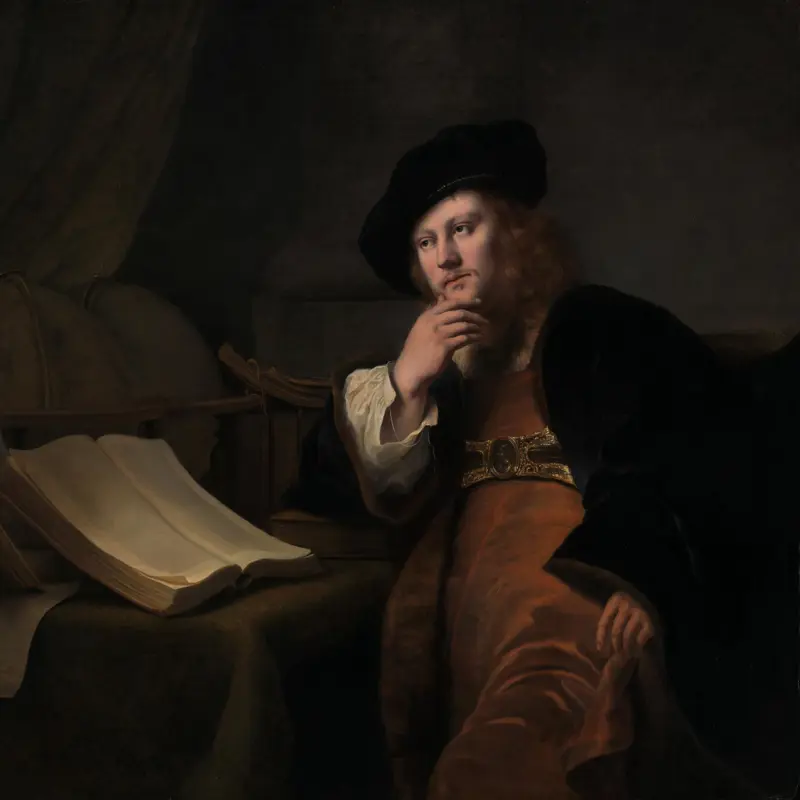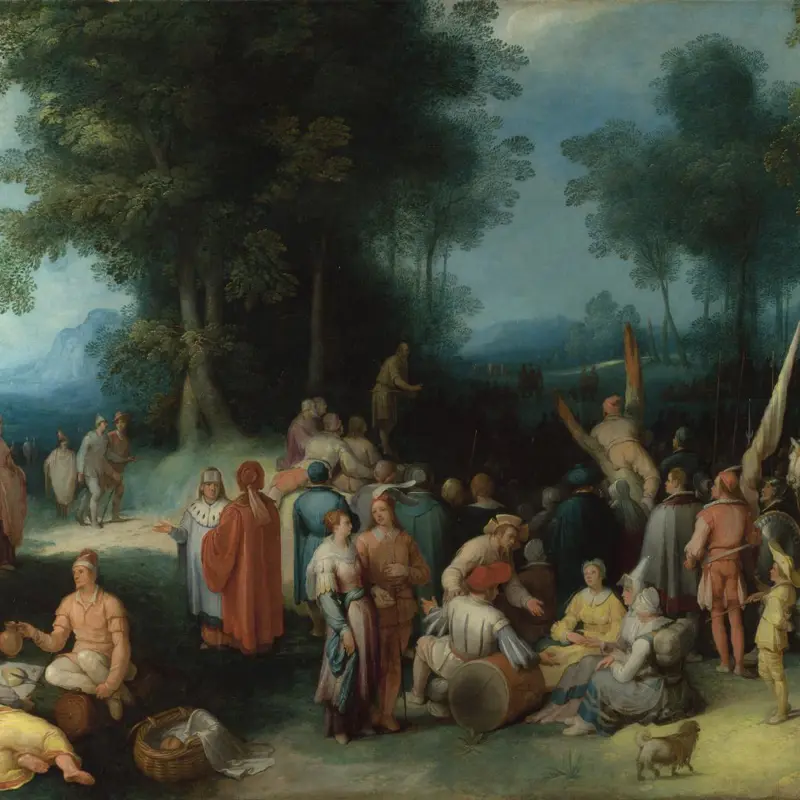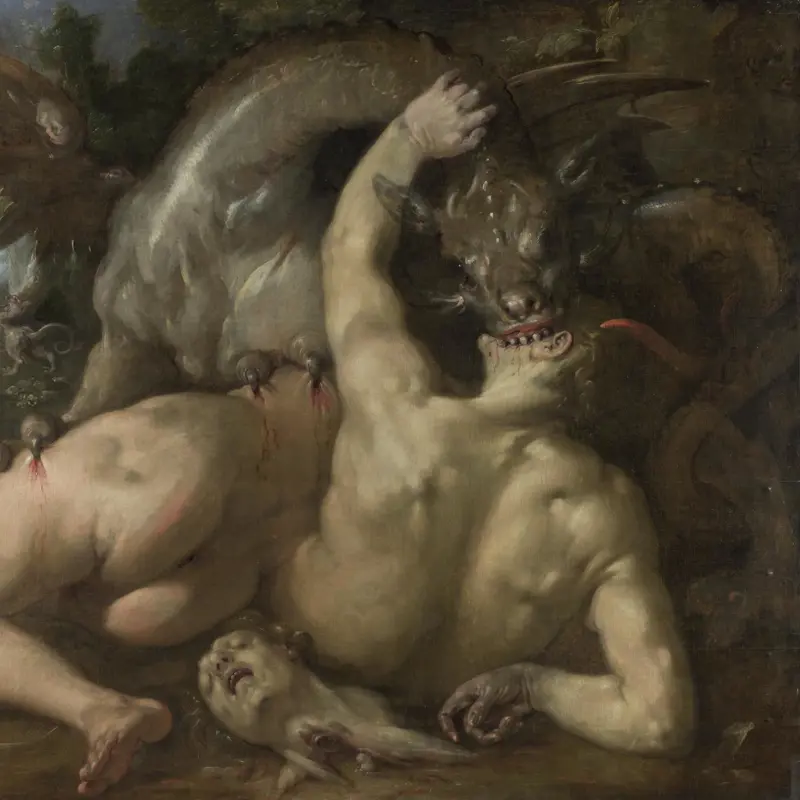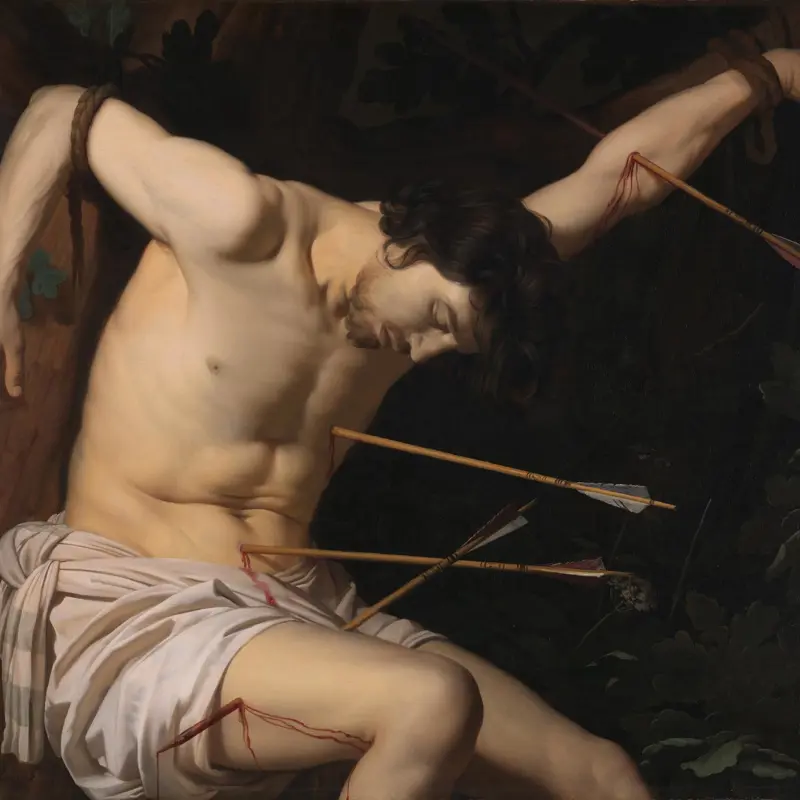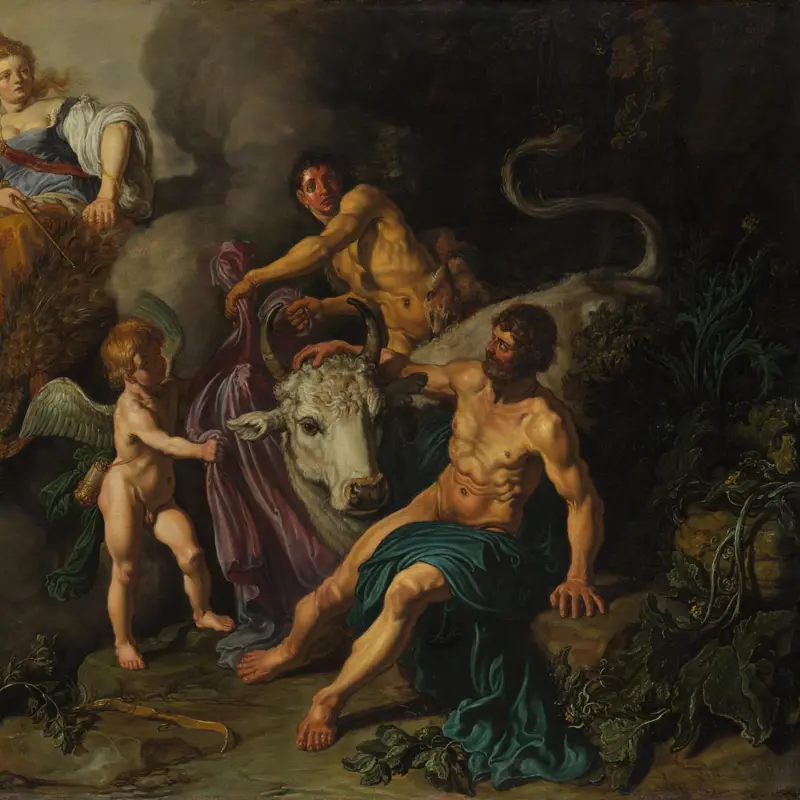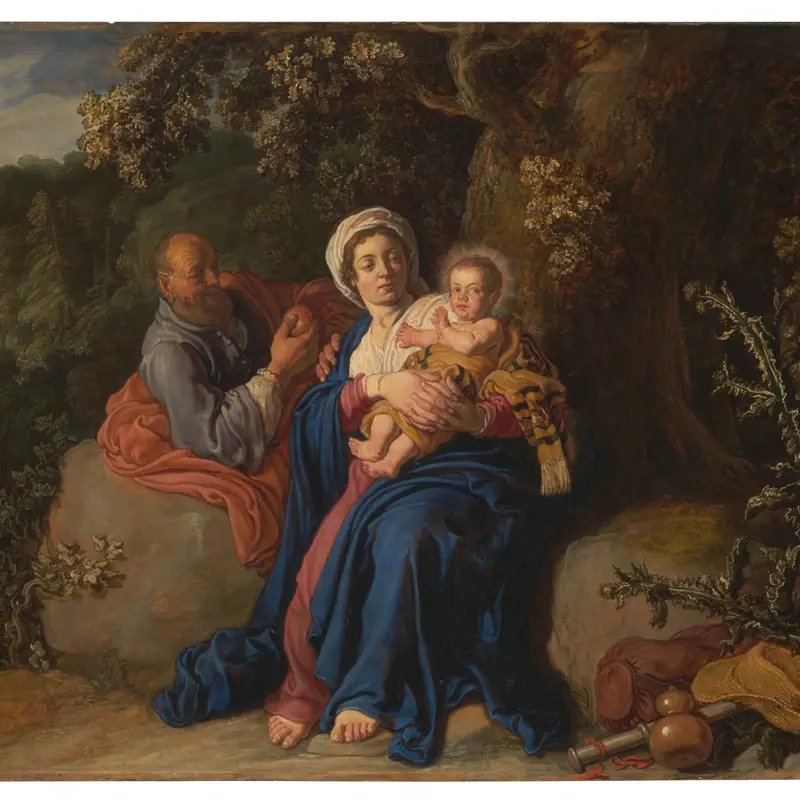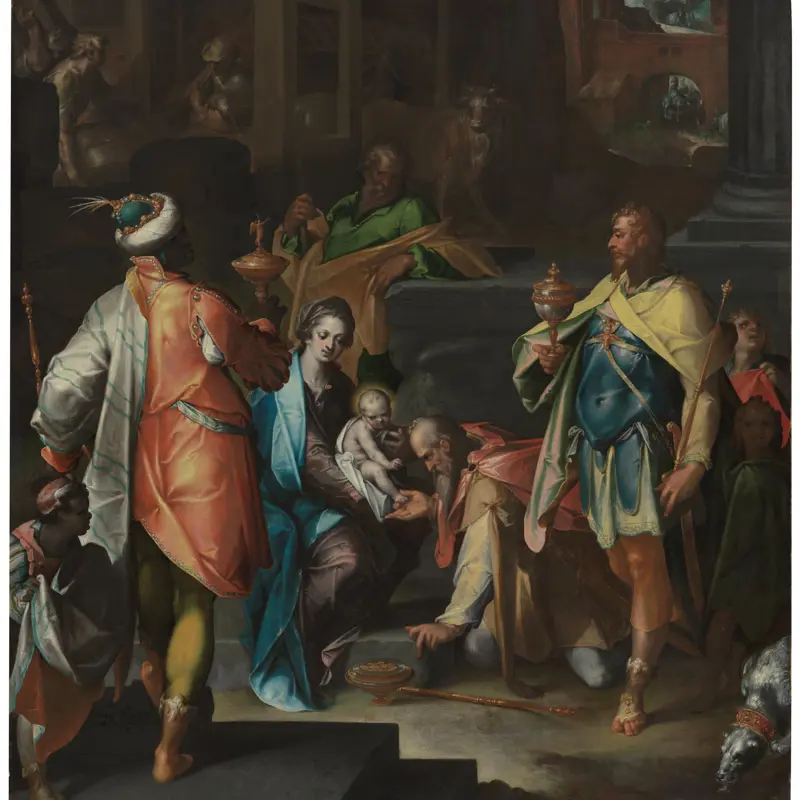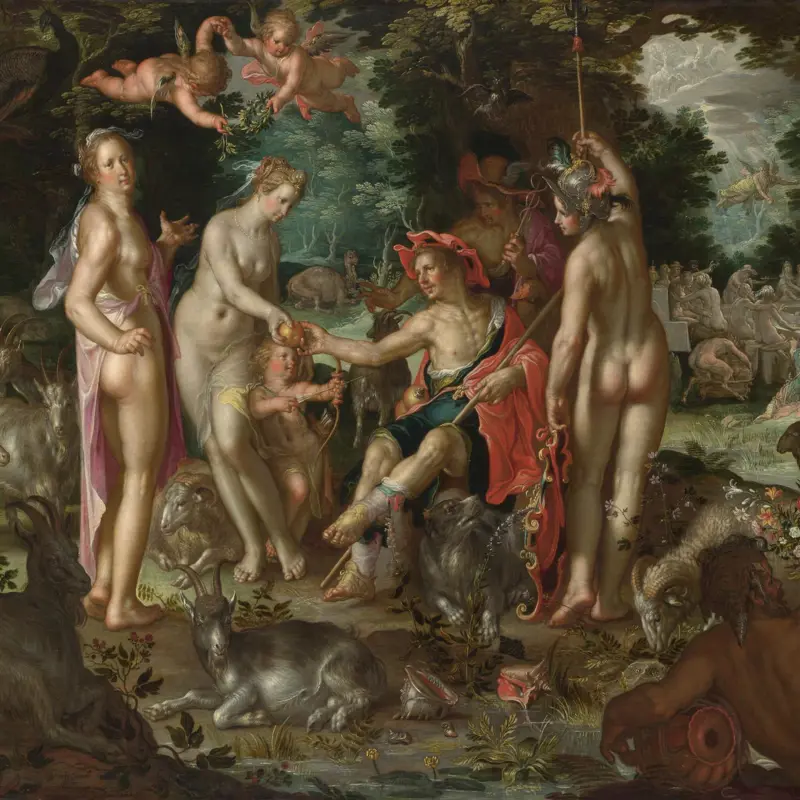Although religious commissions, such as altarpieces, declined in the Protestant Northern Netherlands, biblical and mythological subjects, considered the highest form of painting, remained popular.
The pan-European style of Mannerism, characterised by the exploration of the contorted human figure in daring poses, was also influential in the Northern Netherlands. This can be seen in the works of Bartholomeus Spranger, Cornelis van Haarlem and Joachim Wtewael.
Many artists from the predominantly Catholic city of Utrecht followed in the footsteps of Caravaggio (1571–1610), whose works they had studied during trips to Italy. Most of them were pupils of Abraham Bloemaert, a highly influential artist who during his long career dominated artistic life in Utrecht. Bloemaert started as a Mannerist painter like Cornelis van Haarlem and Wtewael, but later adopted influences from his students who had studied in Italy. This led him to develop a more classical style that blended Caravaggesque elements with trends popularised by Rubens in Flanders.


